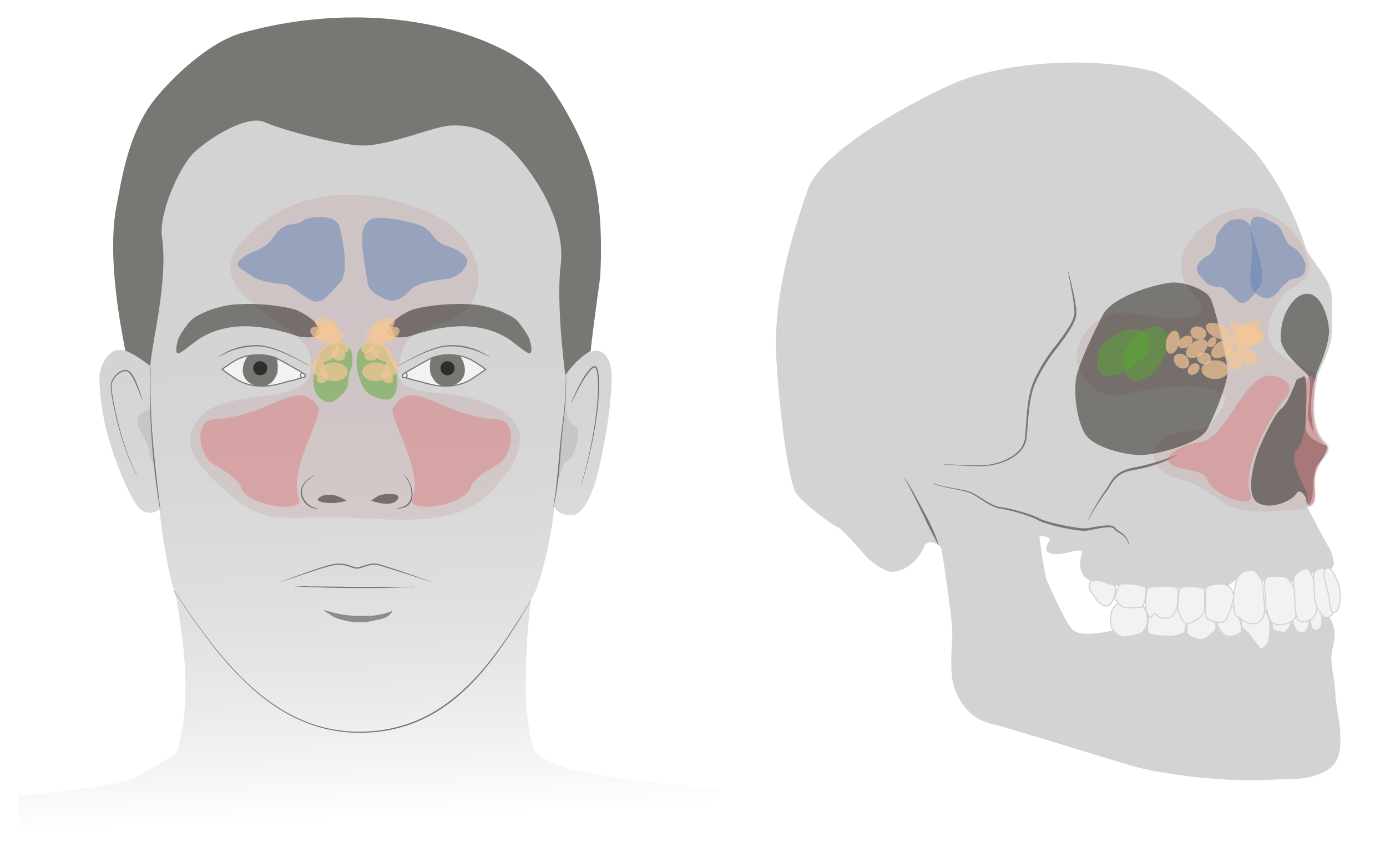Playlist
Show Playlist
Hide Playlist
Acute Sinusitis: Microbiology and Epidemiology
-
Slides FisherSinusitis InfectiousDiseases.pdf
-
Reference List Infectious Diseases.pdf
-
Download Lecture Overview
00:01 The microbiology of sinusitis actually reflects the upper respiratory tract flora. 00:09 So you shouldn’t be surprised that Streptococcus pneumoniae is the most common cause of bacterial sinusitis followed close behind by Haemophilus influenzae. 00:22 Anaerobes are not a real common cause of sinusitis unless the patient has chronic blockage of the ostia. 00:32 That’s when anaerobes can survive there. 00:37 Streptococcus species don’t cause acute sinusitis very often. 00:43 Moraxella catarrhalis has a low incidence in adults, but a much higher incidence in children. 00:52 And the miscellaneous pathogens and staph aureus account for the rest. 01:00 So acute sinusitis is common, but it’s most commonly caused by viruses. 01:09 And I just want to point out that children and those adults who have small children know this very well. 01:19 Children get the common cold five to seven times each year, and so do their parents. 01:29 Now, adults who don’t have small children will get two to three colds a year. 01:34 You probably can document that on your own experience. 01:40 I want to point out, however, how uncommon complicating bacterial sinusitis is. 01:47 Only 6% to 13% of kids get bacterial sinusitis even though they get five to seven common colds a year. 01:57 So that’s pretty unusual. 02:00 And adults get bacterial sinusitis from 0.2% to 2.5% of the time. 02:10 So, most of the time when an adult comes into the office complaining of nasal congestion and having purulent nasal secretions, they still have the common cold, they don’t have bacterial sinusitis, and it’s over-diagnosed and it certainly is over-treated with antibiotics. 02:35 So, in a viral upper respiratory tract infection, it starts out, as everybody knows, clear and watery. 02:44 And it then becomes thick and mucoid and even in viral sinusitis, viral common colds, it becomes greenish and yellowish. 02:56 All that means is that neutrophils have come in to the secretions and made the color yellow or green. 03:06 Low-grade fever is not common in adults, but it is fairly common in children. 03:16 And the common cold, and we should all advise our patients of this, the common cold lasts normally five to ten days. 03:27 So, the patients are likely to come in to the doctor in the second week of the illness saying, “I’m not well. I’ve got bacterial sinusitis, doc. I want some antibiotics.” But they still have the residual of a common cold, most of them, not bacterial sinusitis. 03:48 We start thinking about bacterial sinusitis if they’ve had more than ten days of nasal discharge, if they have low-grade fever, if they have malodorous breath which reflects the possibility of anaerobic contamination, and we certainly worry about it if they have periorbital edema because that usually means a bacterial sinusitis. 04:15 Viruses don’t do that. 04:18 We also think about it if their symptoms were getting better from their common cold, but now they’re starting to have increased discharge and congestion. 04:30 So, they were starting to ease off, and then they turn around and start going the other way, or if they develop new fever, or if they start developing a cough in the daytime. 04:46 So one of the things that is most important to an evaluating physician is how long the respiratory symptoms have been there. 04:54 That’s the most useful factor for diagnosing bacterial infection. 05:00 Symptoms or signs lasting more than ten days without clinical improvement of any kind, that’s when we think about bacterial sinusitis, certainly, if they have purulent nasal discharge and high fever for three to four days because high fever isn’t common in viral sinusitis. 05:23 Or let’s say they have new fever, headache, or increased discharge after five to six days of a typical viral syndrome. 05:33 And by the way, the headache is generally located anteriorly where the sinuses are and particularly aggravated by leaning forward. 05:44 Those are indications of a possible bacterial sinusitis. 05:50 So if a patient has what we call “double sickening” we would begin to think about bacterial superinfection. 06:00 What about imaging in acute sinusitis? This is overused, as well. 06:05 In uncomplicated bacterial sinusitis, you don’t need to image the sinuses. 06:15 If you are to image somebody with the common cold, and it’s done far too frequently, you would find sinus thickening, you might even find air fluid levels in the sinuses of somebody who has nothing more than the common cold. 06:32 The imaging generally can’t confirm a diagnosis of bacterial sinusitis. 06:38 Just one aside is that if somebody had fungal sinusitis, you may show invasion of the bones. 06:46 That would be a serious problem. 06:47 But generally, imaging is not indicated in acute sinusitis.
About the Lecture
The lecture Acute Sinusitis: Microbiology and Epidemiology by John Fisher, MD is from the course Upper Respiratory Infections. It contains the following chapters:
- Acute Sinusitis – Microbiology and Epidemiology
- Sinusitis – Signs/Symptoms
- Acute Sinusitis – Diagnosis
Included Quiz Questions
For normal children under 5 years old, what is the average number of common colds per child per year in the United States?
- 5-10
- 1-2
- 3-4
- Less than 1
- 15-20
Which pathogen is the most common cause of the common cold syndrome?
- Rhinovirus
- Respiratory syncytial virus (RSV)
- Enterovirus
- Adenovirus
- Coronavirus
Which of the following is the most common causative pathogen in bacterial sinusitis?
- Streptococcus pneumoniae
- Haemophilus influenza
- Anaerobic bacteria
- Mycoplasma pneumoniae
- Staphylococcus aureus
Which of the following findings most reliably distinguishes bacterial sinusitis from a viral upper respiratory tract infection in a child?
- Over 10 days of symptoms with no clinical improvement
- Yellow-green nasal discharge
- Low grade fever
- High grade fever
- Headache
A 42-year-old smoker presents with complaints of fevers, headaches, and congestion with thick mucoid nasal discharge. His symptoms had initially improved but then worsened over a 14-day time period. What is the next best step in management?
- Antibiotics
- Symptomatic treatment
- Computed tomography of the sinuses
- Sinus endoscopy
- Pharyngeal culture
Customer reviews
5,0 of 5 stars
| 5 Stars |
|
5 |
| 4 Stars |
|
0 |
| 3 Stars |
|
0 |
| 2 Stars |
|
0 |
| 1 Star |
|
0 |




